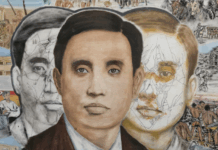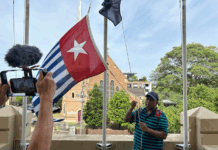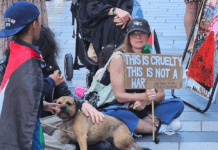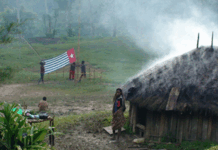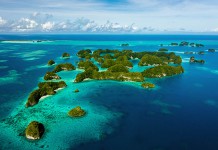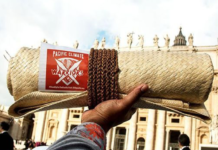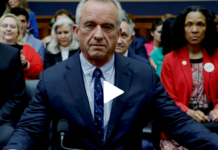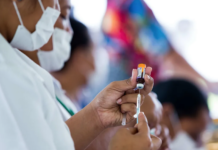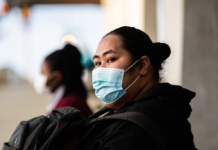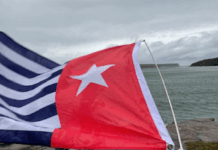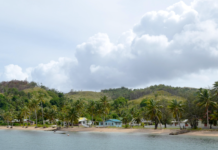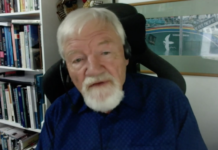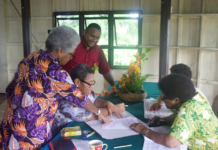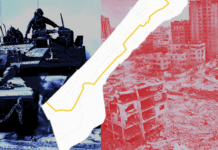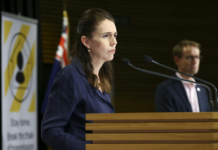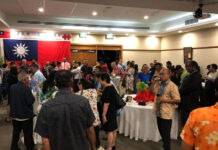COMMENTARY: By Kasun Ubayasiri
We are gathered here to mark the International Day to End Impunity for Crimes Against Journalists.
The Media, Entertainment and Arts Alliance (MEAA) National Media Section usually campaigns for journalists’ rights and industrial agency in Australia — but today, we join hands with the IFJ — International Federation of Journalists, the Committee to Protect Journalists, and Reporters sans frontières — Reporters Without Borders, to make a stand against the global assault on press freedom.
The past few years have been particularly hostile for journalists around the world.
- READ MORE: RSF expresses ‘regret’ over new Israeli Supreme Court delay on Gaza media access
- Other media freedom reports
From the press briefing rooms in the White House to the streets of Gaza, journalists have been in the crosshairs.
Shortly after assuming office in January 2017, US President Donald Trump accused the press of being an “enemy of the American people”. He has doubled down in his second term.
We have seen newsroom after newsroom fall foul of White House press secretaries; we saw bans on CNN, The New York Times, the LA Times and Politico back in 2017, and now, the Associated Press for simply refusing to fall in line with the so-called renaming of the Gulf of Mexico.
Three weeks ago, the world watched Pentagon journalists exit en masse, after rejecting Secretary of War Pete Hegseth’s latest edict.
Another White House rule
Just last week, we saw the declaration of another White House rule — this time, restricting credentialed journalists from freely accessing the Press Secretary’s offices in the West Wing.
These attacks on US soil are complemented by an equally invidious assault on media outlets on a global scale.
Funding freezes and mass sackings have all but silenced Voice of America, Radio Free Europe, Middle East Broadcasting Networks and Radio Free Asia — the latter of which employed several of our colleagues here in Queensland and the Pacific.
We have seen Trump’s verbal attack on the ABC’s John Lyons, and how that presidential tantrum led to the ABC being excluded from the Trump–Starmer press conference in the UK.
Apparently, they simply didn’t have space for the national broadcaster of the third AUKUS partner — and all this with barely a whimper from the Australian government.
But then, why would our Prime Minister leap to journalism’s defence when he sees fit to exclude Pacific journalists from his Pacific Island Forum press conference — in, you guessed it, the Pacific.
This enmity towards journalism, has been a hallmark of the Trump presidency.
Blatant ignorance, hubris
His blatant ignorance, hubris, and perfidy — indulged by US allies — has emboldened other predators and enemies of the press around the world.
As at December 2024, the Committee to Protect Journalists (CPJ) listed 376 journalists as being imprisoned in various countries around the world — it was the highest number three years running, since the record started in 1992.
China topped the list with 52 imprisoned journalists, with Israel and the Occupied Palestinian Territory a close second with 48.
Myanmar had 35, Belarus 33, Russia 30 and the list continues.
Among this group are 15 journalists arrested in Eritrea more than two decades ago, between 2000 and 2002, who continue to be held without charge.
And it gets worse.
The same CPJ database records 2023, 24 and 25 as the worst years for the deaths of journalists and media workers — worse than the years at the height of the US and allied invasion of Iraq and Afghanistan, and the war against the Islamic State.
Killed journalists
The war in Gaza accounts for a significant number of these deaths.
A staggering 185 journalists and media workers have been killed directly because of their work in the past 25 months — on a small strip of land just 2.3 per cent the size of Greater Brisbane.
I urge you to read the ICRC case study on the legal protection of journalists in combat zones. It clearly explains how Protocol 1 of the Geneva Convention protects journalists, even when they engage in producing “propaganda” for the conflicting parties.
Since our vigil 12 months ago, the CPJ has recorded the deaths of 122 journalists and media workers around the world. These are deaths the CPJ has confirmed as being directly linked to their work — such as those killed while reporting in combat zones or on dangerous assignments.
Of those, 33 were confirmed murders — meaning those journalists were deliberately targeted.
A staggering 61 of those 122 were killed in the Occupied Palestinian Territory — in Israel’s war on Gaza. Another 31 were killed in a single day during targeted Israeli airstrikes on two newspapers in Sana’a in Yemen. And three more were killed in an Israeli airstrike on a compound housing journalists in Lebanon — meaning Israeli defence forces were responsible for 78 percent of last year’s killings.
We talk of Israel’s attack on journalists because it is unprecedented, but Israel is by no means the only perpetrator of such crimes — there was the Mozambique journalist murdered during a live broadcast; a video journalist tortured and killed in Saudi Arabia; and a print journalist tortured and killed in Bangladesh.
Today we read the names of 122 fallen comrades and remember them one by one.
Dr Kasun Ubayasiri is co-vice president of the MEAA National Media Section. He gave this address at the annual vigil in Brisbane Meanjin last Sunday, on International Day to End Impunity for Crimes Against Journalists. Republished with the author’s permission.


